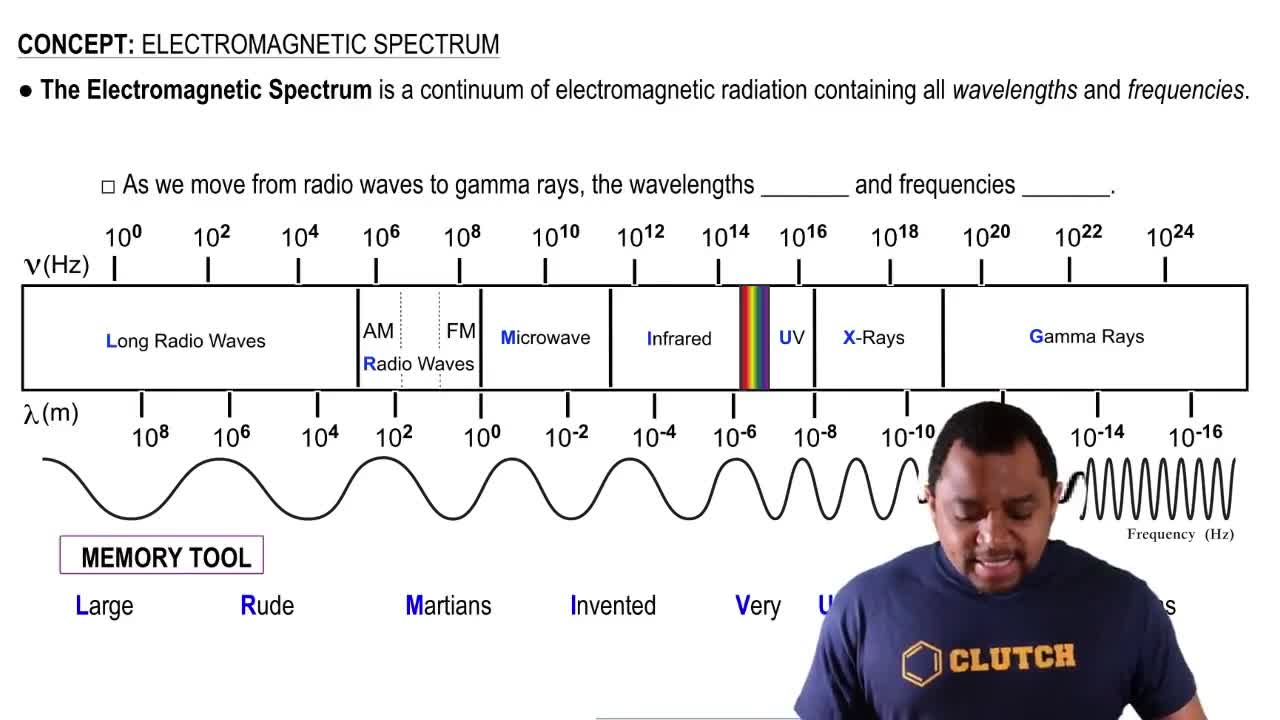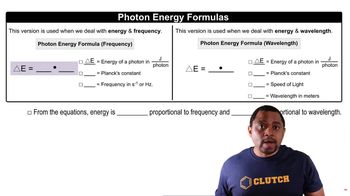Here are the essential concepts you must grasp in order to answer the question correctly.
Electromagnetic Spectrum
The electromagnetic spectrum encompasses all types of electromagnetic radiation, which vary in wavelength and frequency. It ranges from radio waves with long wavelengths to gamma rays with very short wavelengths. The spectrum is divided into regions, including radio, microwave, infrared, visible light, ultraviolet, X-rays, and gamma rays, each with distinct properties and applications.
Recommended video:
Frequency and Wavelength Relationship
Frequency and wavelength are inversely related properties of electromagnetic waves. The frequency (measured in hertz) indicates how many wave cycles pass a point per second, while wavelength (measured in meters) is the distance between successive peaks of the wave. This relationship is described by the equation c = λν, where c is the speed of light, λ is the wavelength, and ν is the frequency.
Recommended video:
Frequency-Wavelength Relationship
Photon Energy
A photon is a quantum of electromagnetic radiation, and its energy is directly proportional to its frequency. The energy of a photon can be calculated using the equation E = hν, where E is energy, h is Planck's constant, and ν is frequency. Higher frequency photons, such as those in the MRI range, carry more energy compared to lower frequency photons, which are found in radio waves.
Recommended video:





